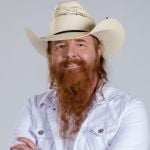
As we journey through Advent, we reflect on Old Testament prophecies that foretell the birth of the Savior. This in turn may remind us that reading and understanding Old Testament prophecy can be one of the most perplexing things about our faith! By its nature, prophecy can be difficult to interpret. It uses many symbols, and these can be taken in more than one way.
One of the perennial temptations of interpreters is to see the events of their own day—or of their near future—in prophetic texts. People have a tendency to assume that they are living during or just before major prophetic events. Thus there have been a series of people down through history who have thought that they were living at the end of the world, and they misread prophetic texts to support this view.
The key to understanding biblical prophecy is to determine its literal sense—that is, what it meant in its original context, what the prophet was trying to communicate to his audience for their benefit. Normally Old Testament prophecies have their primary fulfillment within the generation to which they were given or within a few generations.
However, they can have additional fulfillments later in time. Thus many Old Testament prophecies have further fulfillments at the time of Christ. For example, the prophecy of Isaiah 7:14 (“Behold, a young woman shall conceive and bear a son, and shall call his name Immanuel”) was a sign given to assure King Ahaz that enemy kings would not conquer him. For this prophecy to do its job, it needed to be fulfilled during his reign (732-716 B.C.). It therefore points, on the primary, literal level, to a child conceived at that time (perhaps Ahaz’s son, the future King Hezekiah).
This was as obvious to the evangelist Matthew as it is to us, but like the other New Testament authors, he knew prophetic texts can have multiple dimensions, and so he recognized that the prophecy also pointed to the virgin birth of Christ, who was “Immanuel” or—in Hebrew—“God with us” (Matt. 1:23).
Knowing all this, there is a series of principles to keep in mind when reading the Old Testament prophets:
- The first thing we need to do is set aside expectations we have about the text. In particular, do not look to a text to validate a particular view you already hold. Ask what the text is saying, not what you want it to say.
- To the best of your ability, identify who wrote a prophetic text, who the original audience was, and when it was composed. Sometimes this is difficult or can be done only within broad limits, but situating a text in its historical circumstance is very important.
- Seek to establish the literal sense of the text by focusing on the words the author wrote and interpreting them in the historical context in which they were composed. Specifically, ask how these words would have been understood by the original audience.
- Ask what overall message the prophet was trying to communicate to his audience. Bear in mind that this was not to satisfy our curiosity about our future. The prophets sought to warn the Israelites about misbehavior, promise rewards for good behavior, assure them of God’s love, and give them information about living through historical circumstances they would face. Which kind of message is being given in the text you are examining?
- Ask which elements in the text are symbolic (or may be symbolic) and what these symbols likely mean—based on what this text says and how similar symbols are used elsewhere.
- Look for clues in the text that give an idea of when the prophet and his audience would have expected the text to be fulfilled. Bear in mind that this would normally be within the prophet’s own generation or within a few generations.
- Ask which events occurring in that time frame could have fulfilled the prophecy. Sometimes it may not be possible to identify a specific event because many details of ancient history have been forgotten, but this does not mean there wasn’t an event that fulfilled it. Look the passage up in commentaries to see what scholars have proposed as fulfillments.
- Ask if there could have been additional fulfillments, because a symbol can sometimes point to more than one thing.
- Having sought to establish the original, literal sense of the text, explore what spiritual senses may exist. At this point it is appropriate to use knowledge of how the text was applied in the New Testament. Since the New Testament is not an exhaustive commentary on the Old, it is also appropriate to consider whether there may be further fulfillments of the text (e.g., additional Christological interpretations).
Observing these principles is a sound starting point for interpreting prophetic texts. Violating them, on the other hand, is a recipe for distorting their meaning!
For more about unlocking the mysteries of the Hebrew scriptures, check out Jimmy’s booklet, 20 Answers: The Old Testament, available now from Catholic Answers Press.



